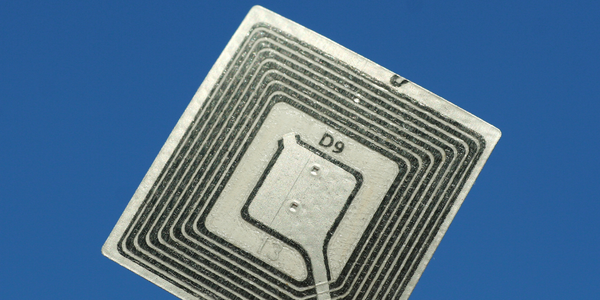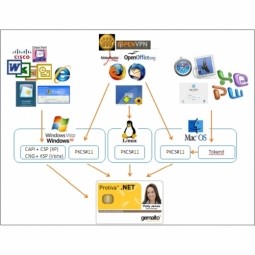适用行业
- 服装
- 生命科学
适用功能
- 销售与市场营销
关于客户
Kyowa Kirin, Inc. US 是一家大型生物制药公司,总部位于日本东京。该公司隶属于全球协和麒麟集团(Kyowa Kirin Group),这是一家总部位于日本的全球专业制药公司。 Kyowa Kirin US 致力于通过追求生命科学和技术的进步来创造新价值。公司致力于通过追求生命科学和技术的进步创造新价值,为世界各地人民的健康和福祉做出贡献。该公司的主要重点是通过数字渠道向医疗保健专业人员 (HCP) 提供相关的个性化内容。
挑战
Kyowa Kirin 是一家总部位于日本东京的大型生物制药公司,面临着适应行业数字化转型的挑战,特别是在 COVID-19 大流行之后。该公司需要通过数字渠道向医疗保健专业人员 (HCP) 提供相关内容,这已成为该领域互动的新标准。向数字参与模式的转变要求公司更快地创建更多内容,同时保持合规性和成本效益。该公司还需要利用数据驱动的见解来为内容创建过程提供信息,并在客户旅程的每个阶段提供个性化内容。
解决方案
Kyowa Kirin 通过利用敏捷运营模式和模块化内容解决方案解决了这些挑战。这些工具使公司能够动态调整内容、保持合规性并保持成本高昂。该公司还专注于在数字资产管理系统和内容创建工作流程中建立灵活性,以在整个数字生态系统中保持相关性。为了推动更加个性化的内容,该公司利用数据驱动的见解来了解 HCP 的不同个性、偏好和需求。该公司还利用模块化内容来简化新渠道和现有渠道中关键信息的重用,这使他们能够快速调整内容以满足 HCP 不断变化的需求,同时减少在医疗、法律和监管 (MLR) 审查周期中花费的时间。
运营影响

Case Study missing?
Start adding your own!
Register with your work email and create a new case study profile for your business.
相关案例.

Case Study
Fire Alarm System and Remote Monitoring Sytem
Fire alarm systems are essential in providing an early warning in the event of fire. They help to save lives and protect property whilst also fulfilling the needs of insurance companies and government departments.Fire alarm systems typically consist of several inter-linked components, such as smoke detectors, heat detector, carbon monoxide, manual call points, sounders, alarm and buzzer. The fire alarm system should give immediate information in order to prevent the fire spread and protect live and property.To get maximum protection a shoe manufacturer in Indonesia opted for a new fire alarm system to monitor 13 production sites spread over 160 hectars. Although the company had an existing fire alarm system, it could not be monitored remotely.It was essential that the new system would be able to be monitored from a central control room. It needed to be able to connect to the existing smoke detector and manual call point. Information should be easily collected and passed on to the Supervisory Control and Data Acquisition (SCADA) system. Furthermore, the system should have several features such as alarm management, auto reporting, being connected to many client computers without additional cost, and run 24/7 without fails. The company also needed a system which could be implemented without changing the architecture of the existing fire alarm system.

Case Study
IoT Applications and Upgrades in Textile Plant
At any given time, the textile company’s manufacturing facility has up to 2,000 textile carts in use. These carts are pushed from room to room, carrying materials or semi-finished products. Previously, a paper with a hand-written description was attached to each cart. This traditional method of processing made product tracking extremely difficult. Additionally, making sure that every cart of materials or semi-finished products went to its correct processing work station was also a problem. Therefore, the company desired an intelligent solution for tracking assets at their factories. They also wanted a solution that would help them collect process data so they could improve their manufacturing efficiency.

Case Study
Retailer Uses RFID Scanner to Improve Efficiency
Patrizia Pepe wished to improve the logistics of their warehouse: accepting incoming goods from their production sites, movement of items throughout
the warehouse, and packaging of goods for distribution to the retail locations. They initially tried to use barcodes for this function. Because barcodes must be individually scanned within a line-of-sight, the acceptance of goods coming into the warehouse was too time consuming. Working with the University of Florence, Patrizia Pepe instituted a five-month pilot project beginning in August of 2009 to test the validity of an RFID solution. The pilot involved tagging of about 60,000 items for the second seasonal collection, and convinced the company to move forward with tagging all items.

Case Study
Monitoring and Controlling Automatic Mixing and Dispensing Machines
As technology advances, textile manufacturing has been transformed from a labor-intensive to a partially or fully automated industry. Automation is significant in all segments of textile production - from spinning to printing, and textile machinery manufacturers are constantly searching for new technologies and automation processes will increase the productivity of their machines. The color paste mixing and dispensing machine is an essential part of the printing and dyeing process. With the advantage of automatically computerized controls and database management, the system can significantly improve its dispensing precision, working efficiency and production quality as well as reducing material consumption.

Case Study
Corporate Identity Solution Adds Convenience to Beckman Coulter
Beckman Coulter wanted to implement a single factor solution for physical and remote logical access to corporate network. Bechman Coulter's users were carrying smart card badges for doors, but also needed a one-time password token to access to our corporate network when they were not in the office. They wanted to simplify the process.








